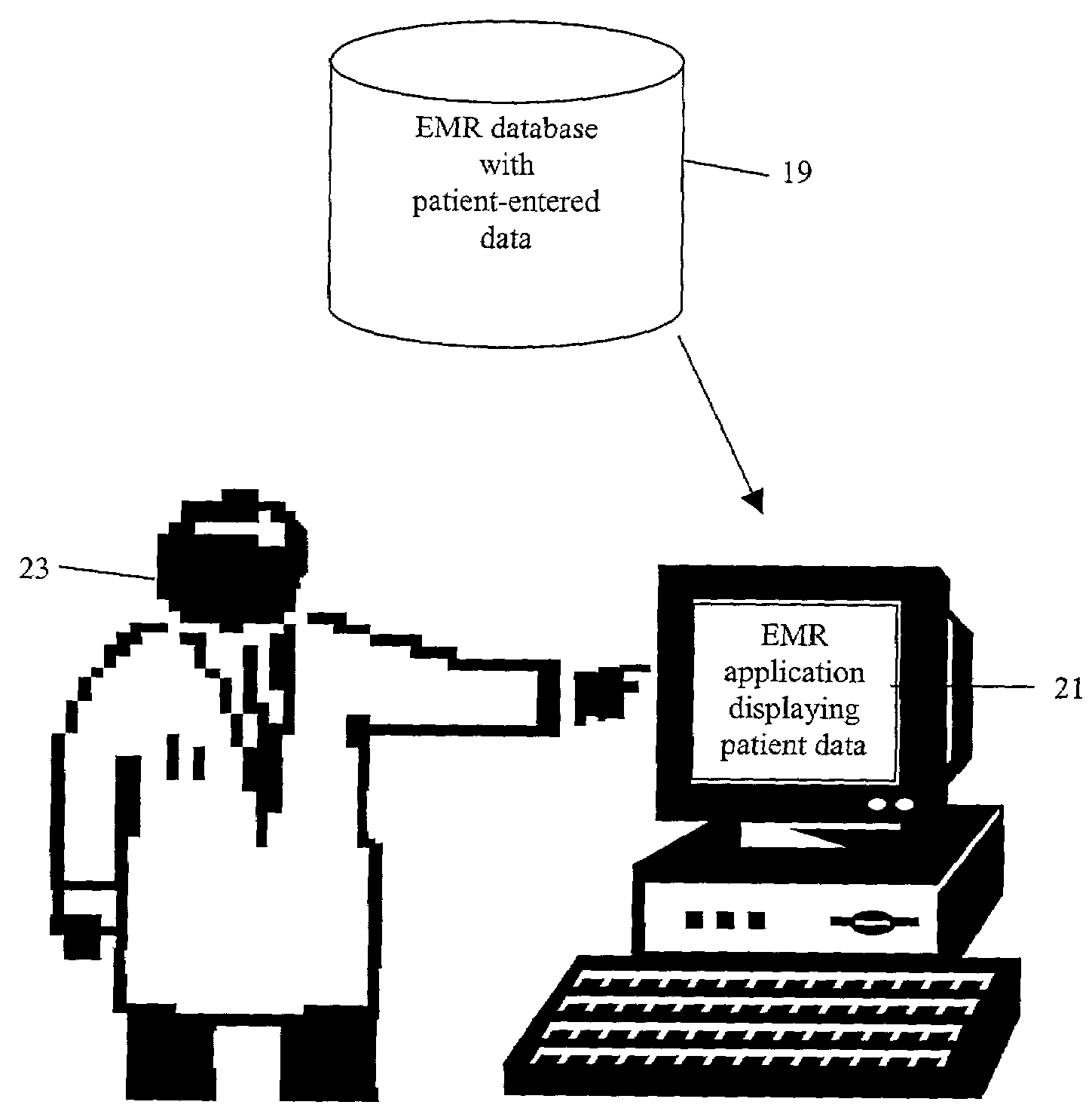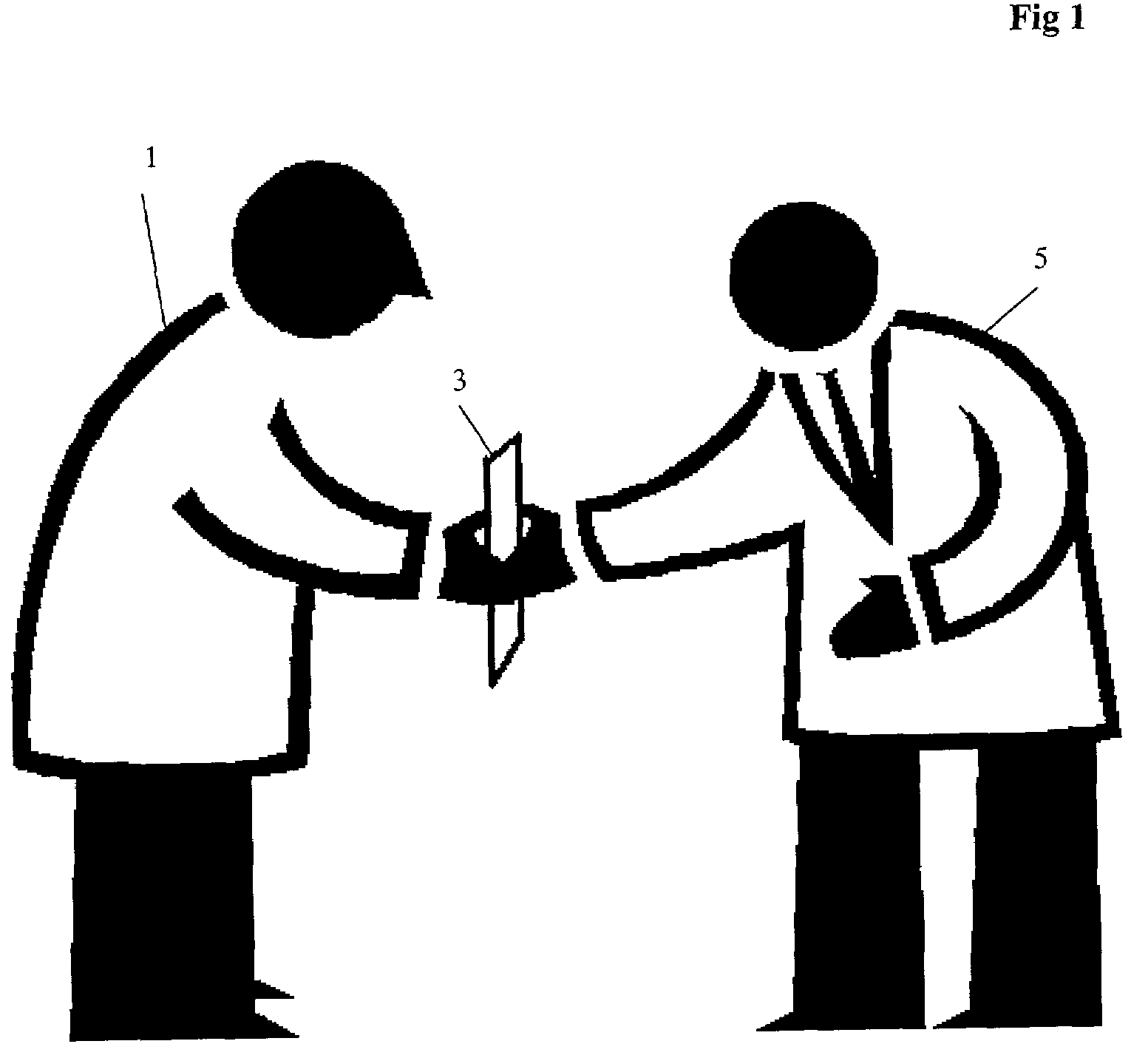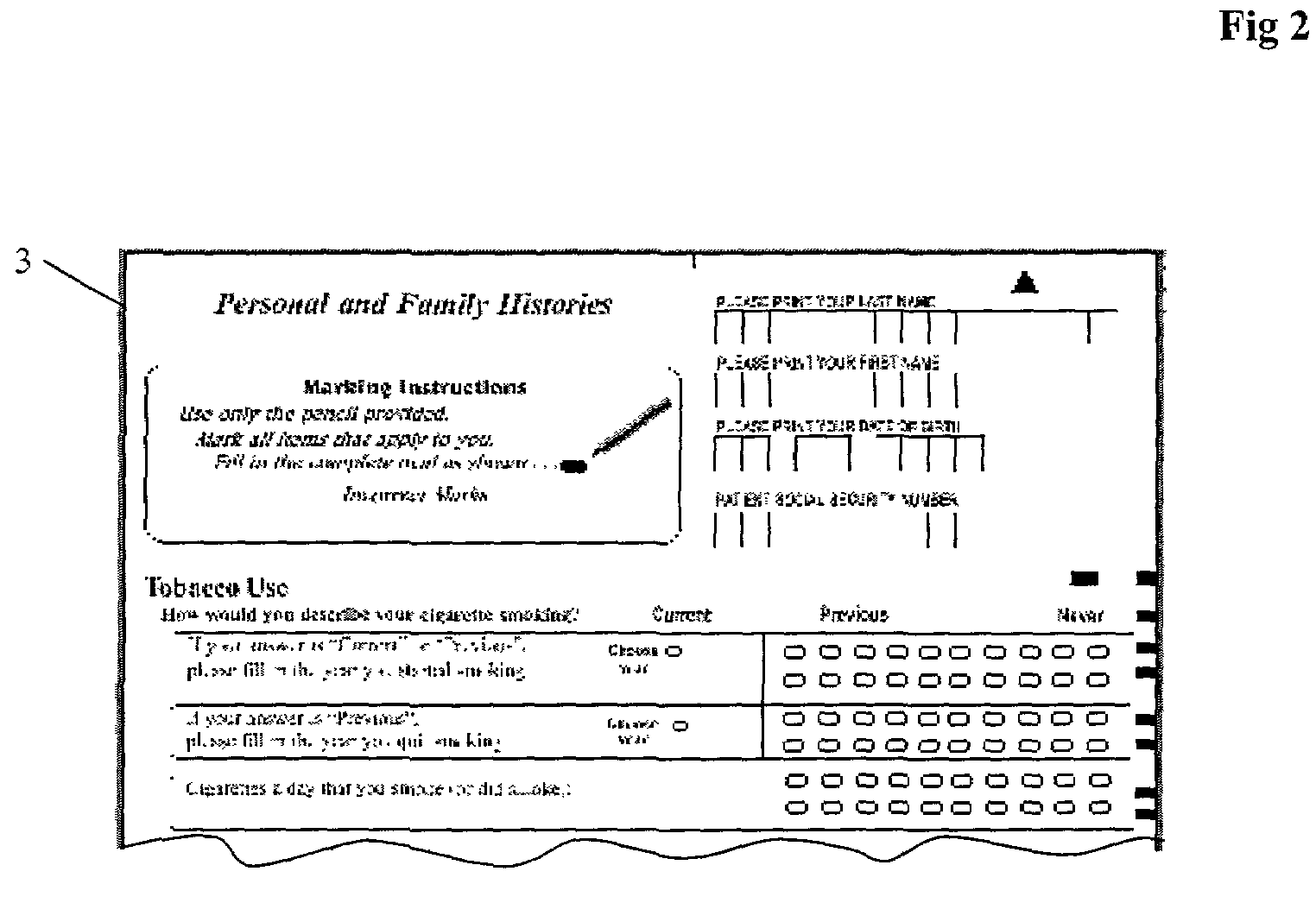Process of interfacing a patient indirectly with their own electronic medical records
a technology of electronic medical records and indirect communication, which is applied in the field of electronic transfer of patient-entered medical data to an existing electronic medical record, can solve the problems of consuming a large portion of the patient's office visit, unable to develop a system to send patient-entered data into an electronic medical record, and unable to meet the requirements of patient-entered medical data, etc., to achieve the effect of convenient use of the process
- Summary
- Abstract
- Description
- Claims
- Application Information
AI Technical Summary
Benefits of technology
Problems solved by technology
Method used
Image
Examples
Embodiment Construction
[0031]Turning now to the drawings where figures and elements are identified by numbers and described below with like numbers and elements, a complete explanation of the process is described.
[0032]FIG. 1 shows a patient (1) accepting a questionnaire (3) from a member of the doctor's staff (5). The questionnaire may be given to the patient within a clinic setting or mailed to the patient prior to an office visit.
[0033]FIG. 2 shows a typical machine readable questionnaire (3). The questionnaire requires patient identification information (name, date of birth, social security number) to be written on the card to aid in uniquely identifying the patient within the electronic medical record. The card consists of a series of questions with applicable answers for the patient to consider. The card may contain multiple choice answers or open boxes for patient responses. An example of a machine readable card is the Review of Systems card designed by the inventor and printed by Lincolnshire Prin...
PUM
 Login to View More
Login to View More Abstract
Description
Claims
Application Information
 Login to View More
Login to View More - R&D
- Intellectual Property
- Life Sciences
- Materials
- Tech Scout
- Unparalleled Data Quality
- Higher Quality Content
- 60% Fewer Hallucinations
Browse by: Latest US Patents, China's latest patents, Technical Efficacy Thesaurus, Application Domain, Technology Topic, Popular Technical Reports.
© 2025 PatSnap. All rights reserved.Legal|Privacy policy|Modern Slavery Act Transparency Statement|Sitemap|About US| Contact US: help@patsnap.com



